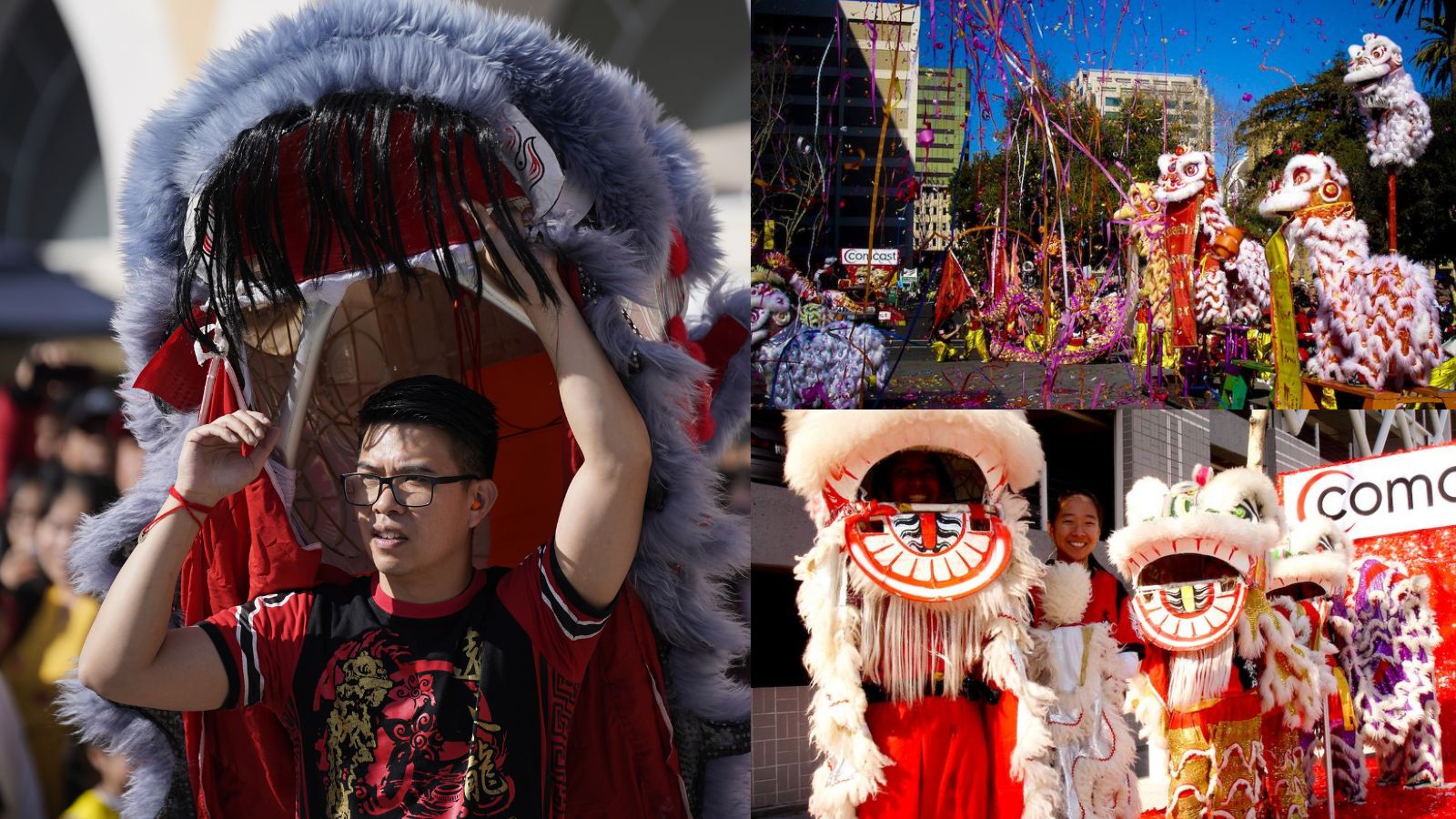The Culture, Art, and Sport of Lion Dance

As we enter the Year of the Dragon, Comcast California is excited to celebrate Chinese New Year with our local communities. We are thrilled to continue our partnership and participation in San Francisco’s Chinese New Year Parade, joining in the cultural celebration and rejoicing Asian communities in the Bay Area and beyond. The parade is Saturday, February 25th, and this year actress and comedian Awkwafina will serve as the Grand Marshal.
Albert Le’s Journey
The Lion Dance is one of many traditions performed to celebrate the new year and welcome good luck and prosperity. Albert Le, External Affairs Manager for Comcast, has been a lion dancer for thirty years. He started at the age of nine in the San Jose area and has since traveled the globe to practice, compete, and perform. In a recent interview with the Comcast California blog editorial staff, Albert shared his story and memorable experiences with lion dancing. Read on to learn more about his journey and advice for aspiring dancers pursuing the art and sport of Lion Dance.
Lion dance is a significant tradition in Chinese culture that has been around for thousands of years. Can you share more about the importance and symbolism of this art form?
The lion dance is a traditional dance performed during important occasions and cultural celebrations. It is performed to bring good luck and drive away evil spirits. Depending on how the dance is performed and what symbolism is used, it can convey wishes of health and prosperity to the event host. Over the last twenty years, the lion dance has grown in importance as an international sport with competitions hosted across the world and here in the U.S.
When did you start lion dancing and what inspired you to learn?
I started lion dancing thirty years ago at the age of nine. I was actually scared of the lion dance as a child, but that fear turned into intrigue. The adrenaline I felt from the sound and movement of the lion dance was very addicting and fun. In my early years, I joined small groups in the San Jose area and started my own troupe in high school to continue learning. Competing and winning competitions also helped keep me inspired to continue learning. In recent years, I keep up learning while consulting for groups across the country.
Lion dancing is an inspiring display of strength and passion. What kind of training goes into learning this art form?
The lion dance is a culture, art, and sport. It’s important to understand the culture behind the lion dance and the layers of symbolism behind it to perform it correctly. It also takes some artistic skill to choreograph a routine, to display the correct dance techniques, and create a theatric experience for those watching the performance. Lastly, it takes months and years of physical training to build strength, stamina, and the athletic ability to endure ten to twenty minutes of being in the proper posture, constantly moving, and jumping acrobatically.
How does lion dance keep you connected to your heritage?
The lion dance is how I experience cultural celebrations, like the Lunar New Year and Moon Festival, and explore my communities of heritage, like Chinatown and Little Saigon. With the symbolism embedded in the lion dance, I also developed a greater understanding of cultural traditions important in my community.
Can you share some memorable moments you have experienced over the years because of lion dance?
My first memorable moment was when our group competed in a national lion dance competition and won multiple categories in 2019. I was proud of the hard work our members put into training and their performances on a national stage. My second memorable moment was traveling to Malaysia and Singapore to receive lion dance training in the Mecca of the Lion Dance world.
Do you have any advice for those wanting to practice lion dance?
Be humble, self-aware, and disciplined in the learning process. There are no shortcuts to being a good lion dancer. It’s also important to seek feedback and learn from multiple trusted sources. The more connected you are to the lion dance community, the more you grow within the sport and art.
How can people continue to support this tradition and the Asian community?
While people often see the lion dance as a traditional dance, it’s also a thriving art and sport. People can add some spice to their event by hiring a lion dance for their wedding, corporate event, or community event. They can also donate directly to a local group as they are often important gathering spaces for youth and multi-cultural exchange.
How does Comcast support and honor your community and culture?
I’m grateful to work for a company that supports cultural celebrations like the San Francisco Chinese New Year Parade and gives us a space to express our cultural identity through employee resource groups. Diversity is valued and celebrated authentically at Comcast.